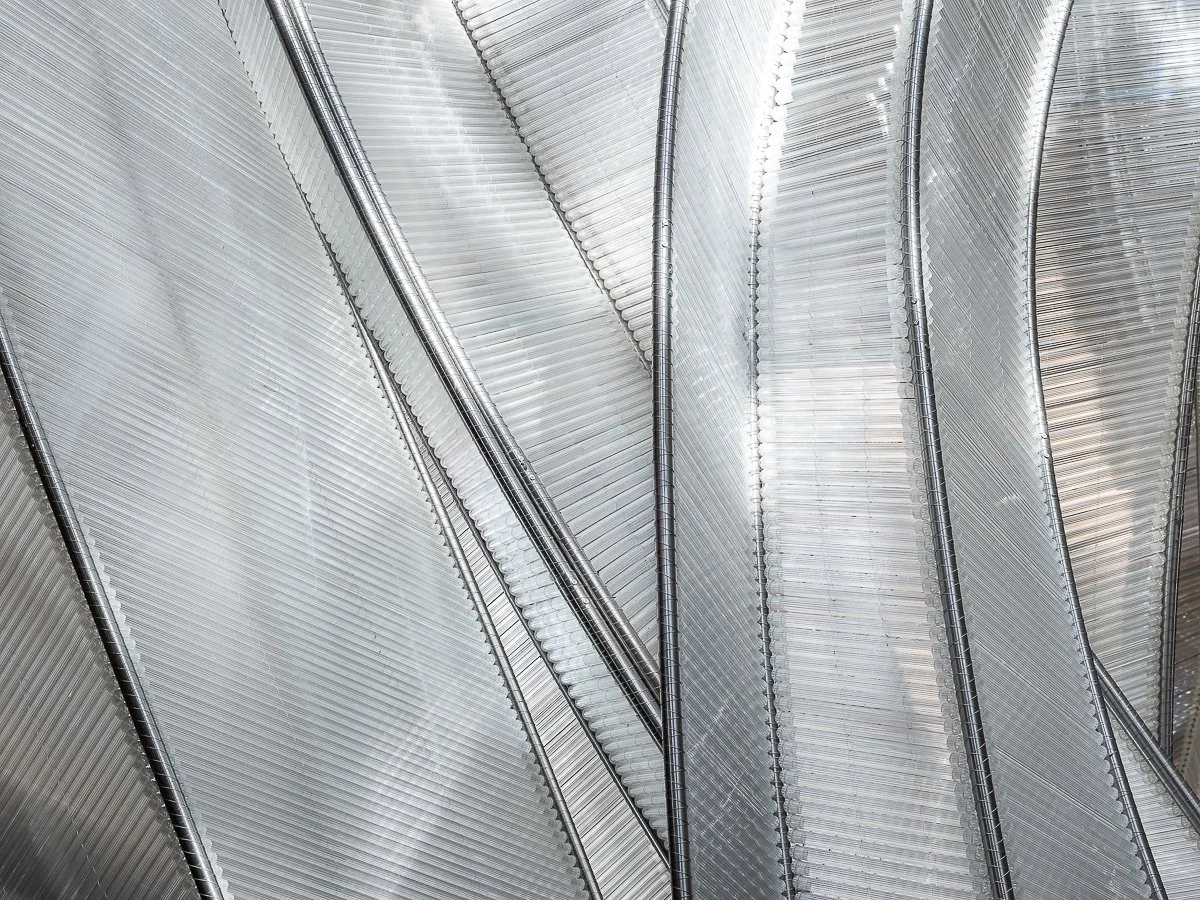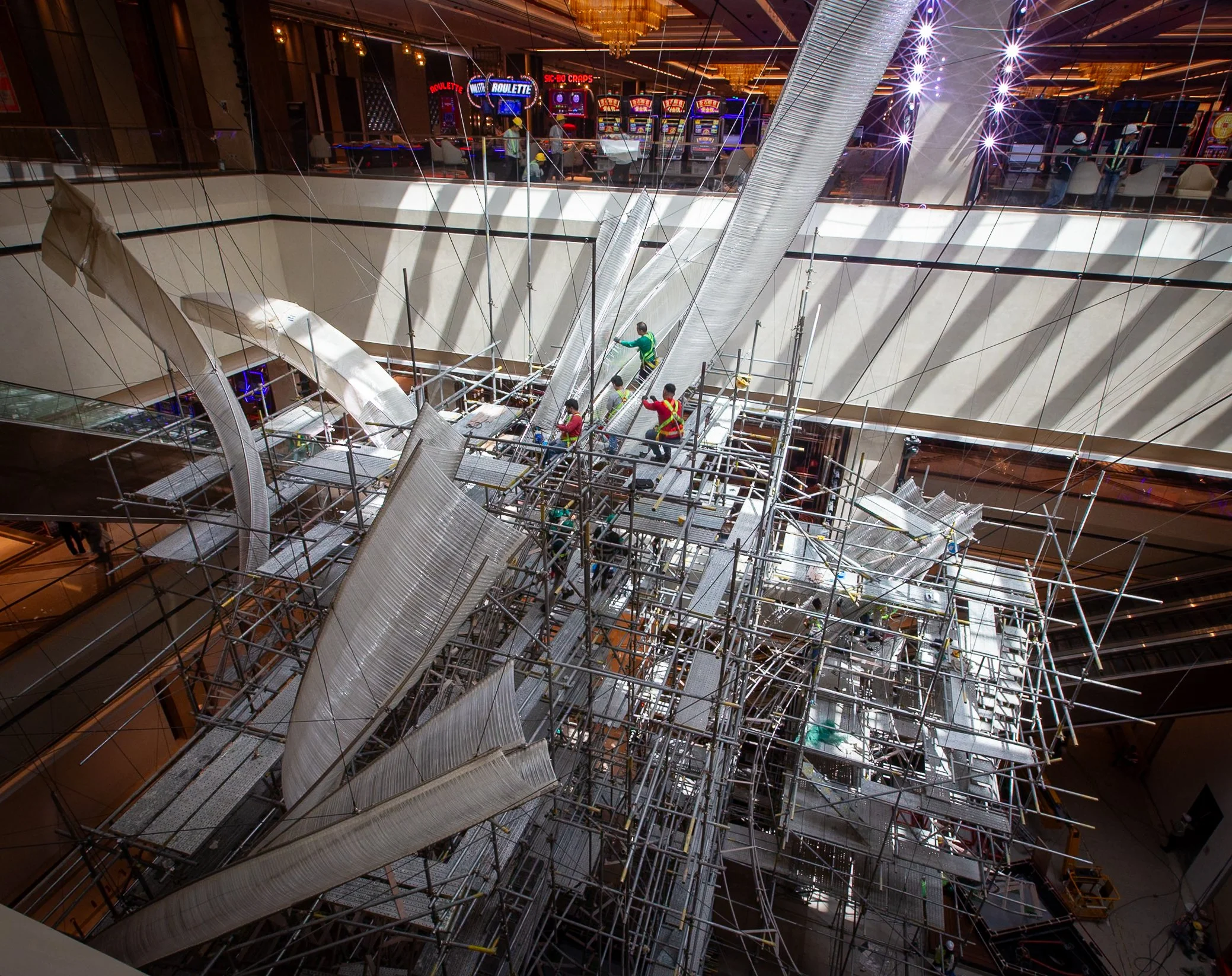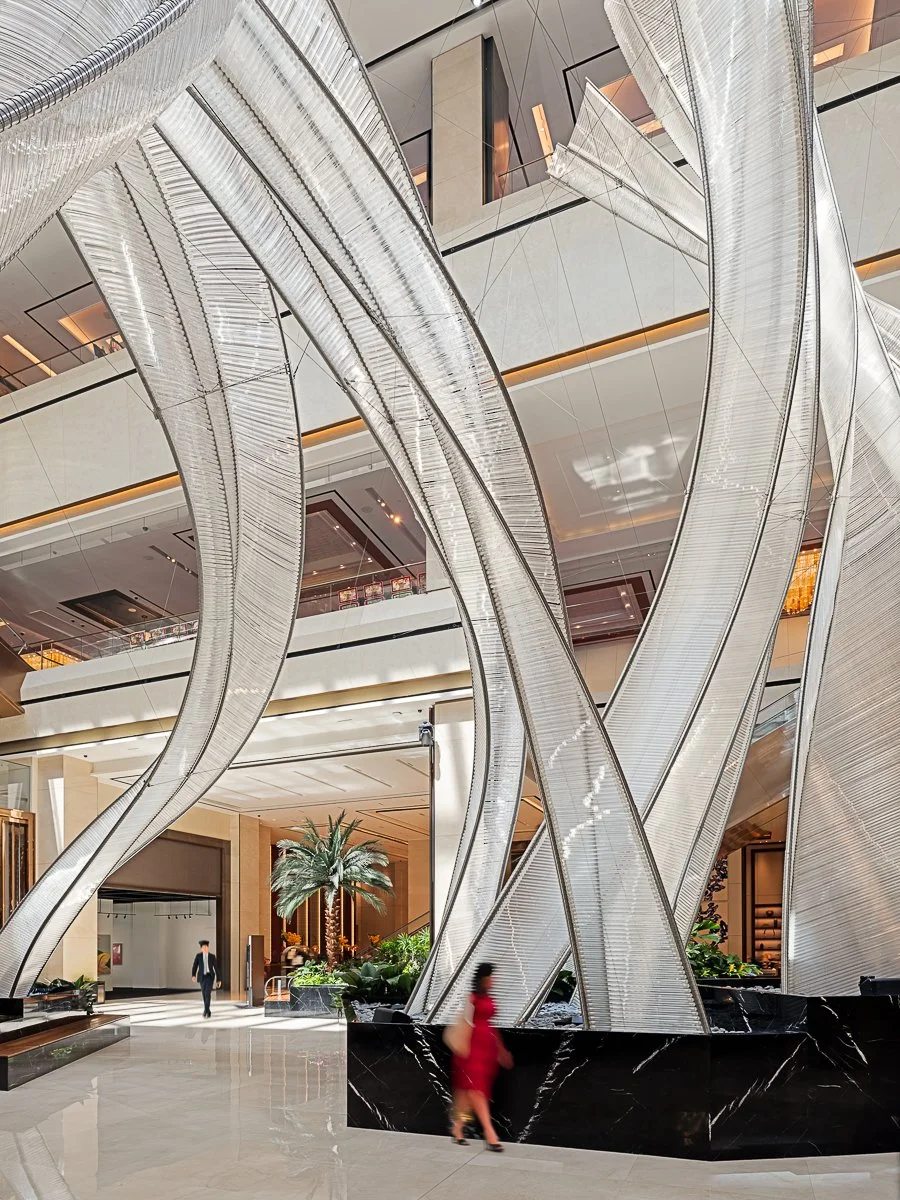When Scale Changes Everything
Interior Design recently featured our Mangrove installation for Solaire Resort North in the Philippines. At eight stories tall and spanning multiple floors, the numbers are impressive—but the statistics aren't really the story.
What interests me most about projects at this scale is how they stop being about the object itself and become about everything the object touches. When you're working on something you can hold in your hands, or even something human-sized, the ripple effects of your decisions are contained. The sculpture exists more or less on its own terms.
But once something reaches architectural scale, it pulls in entire disciplines you wouldn't normally think about as part of sculpture: structural engineering, lighting design, rigging logistics, building codes, even how people move through space over time. Every aesthetic choice has structural implications. Every material decision affects installation sequences. The project becomes less about making a form and more about orchestrating a system.
Mangrove required collaboration with engineers, architects, fabricators, riggers, and building managers across multiple countries. The glass had to withstand seismic loads. The lighting had to account for how color shifts across eight stories of vertical space. The installation had to happen in phases without disrupting a functioning resort.
Those aren't constraints—they're what make the work interesting. Scale forces you to think beyond the studio, beyond your own expertise, and into territory where the sculpture becomes part of something larger than itself. That aggregation—of people, problems, and perspectives—is where the real complexity lives.
You can read the full feature on Interior Design.





